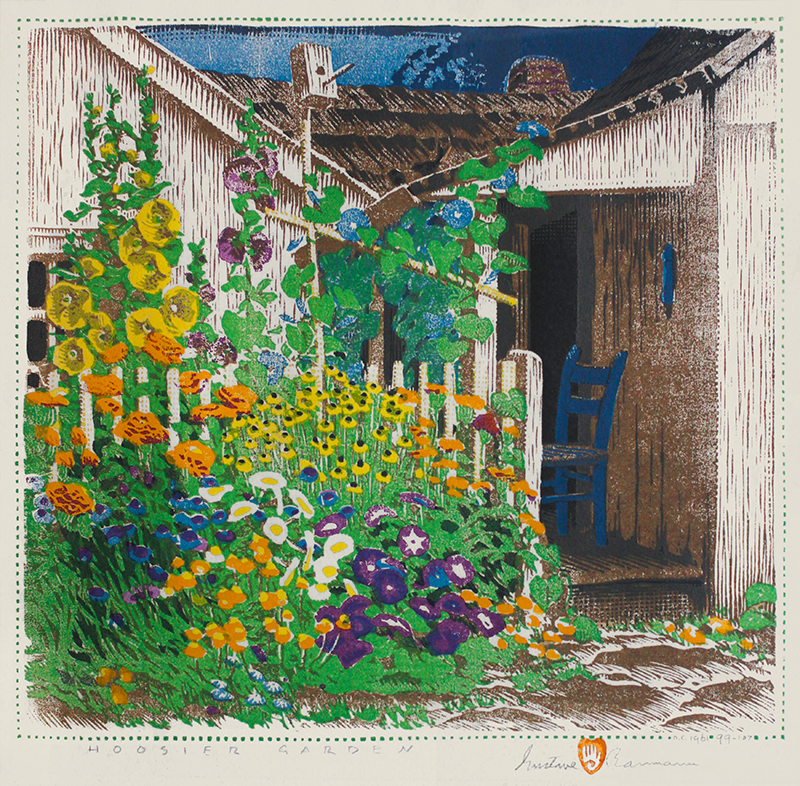Hoosier Garden is a color woodcut that originated in 1927 by American master printmaker Gustave Baumann (1881-1971). This impression was printed by the artist in 1961 and is pencil signed, titled, and editioned R.C. 1961 99-107. Hoosier Garden was printed by the artist from recut blocks (R.C.) on ivory laid CPM Fabriano paper. The image measures 12-3/8 x 12-1/4 inches.
The reference for Hoosier Garden is Chamberlain 114. For an explanation of the various editions and printing record for this color woodcut and the number of blocks used, we refer you to pages 328-330 of In A Modern Rendering The Color Woodcuts of Gustave Baumann: A Catalogue Raisonné.
Hoosier Garden is one of Baumann’s most enduring and popular images. The artist was well ensconced in his Santa Fe studio in 1927 and had extensively explored the southwest recording the landscape, and the people and celebrations of the pueblos in tempera studies. By 1927 Baumann had produced forty-two color woodcuts depicting the southwest. That he would return to imagery of Brown County, Indiana can be explained by the birth of his daughter Ann in July of 1927. To continue creating while staying close to home, Baumann relied on tempera studies and photography created between 1910 and 1916.
Baumann wrote numerous manuscripts on Brown County and the following excerpt from his writing explains the imagery: “The houses in Nashville had a character all their own with no particular style other than dictated by available building material. Trees and orchards nestled in comfortable summer shade and there were many flowers for which the pattern was set by Grandma Battin’s garden. Hidden away in a little alley on the edge of town it had a mixture of growing things that only loving care can produce. Pictured on a seed package of old-fashioned flowers it would have had irresistible buying appeal even without the hummingbirds that buzzed it constantly.”
Gustave Baumann was born in Magdeburg, Germany on 27 June 1881. Ten years later his family immigrated to the US, settling in Chicago. In 1896, Baumann began working in the commercial art field while saving money to study in Germany. After returning from Munich in December 1905 where he studied at the Kunstgewerbeschule, Baumann worked again in commercial art to support his family. In 1909, he discovered Brown County, Indiana where life was inexpensive and he could stay for three months. He produced a series of small format color woodcuts featuring the people and places of Brown County and then produced five large format color woodcuts. His woodcuts were accepted by the committee for the 1915 Panama Pacific International Exposition and he won a gold medal in 1916. Baumann headed east to Wyoming, New York in 1917 and taught at a summer school. From there he headed to Provincetown and New York City before returning to set up his studio in Wyoming. The southwest beckoned and he headed west in May 1918, stopping in Taos for the summer and fall. His funds were low and he needed to head back to Chicago but first stopped at the new art museum in Santa Fe to see an exhibition of his woodcuts. The rest, they say, is history.



